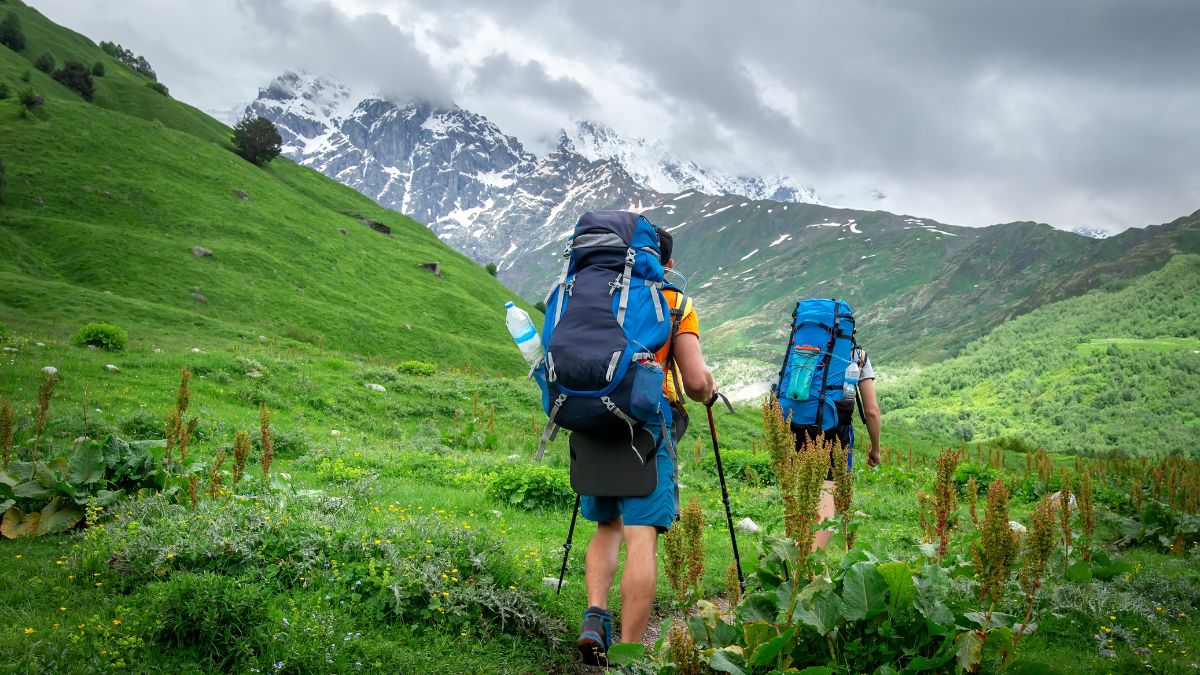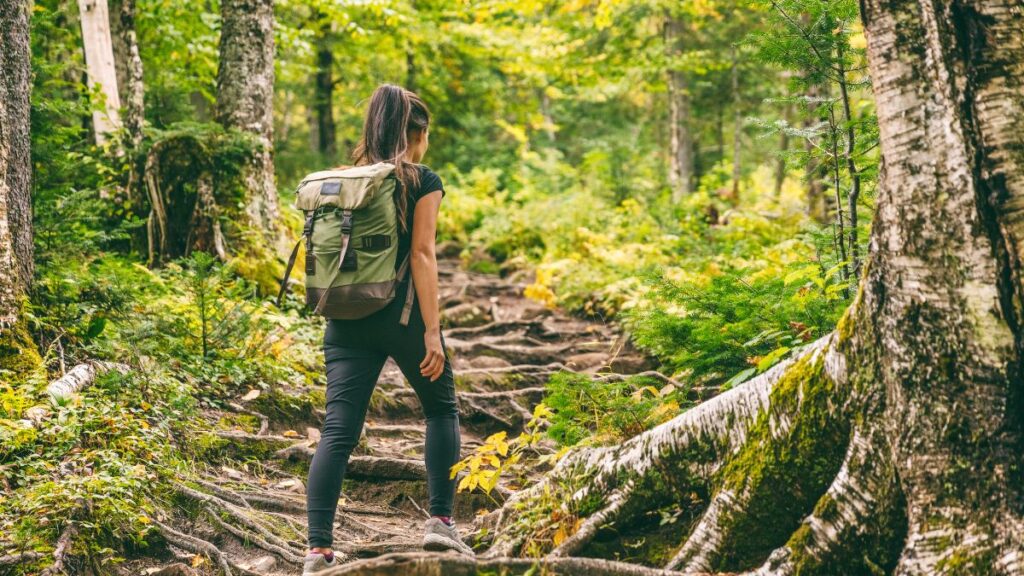What is the difference between hiking and trekking that are often confused, but they describe different experiences.
Both include strolling in nature, yet they fluctuate with regards to challenge, term, and the scenes they navigate.
Knowing the difference between hiking and trekking is essential for selecting the activity that best suits your fitness level and adventure preferences.
In this blog, we’ll explore the main differences between hiking and trekking, guiding you to make an informed choice for your next outdoor adventure.
What is hiking?
TOC
Climbing is an outside movement that includes strolling along trails or ways, frequently in picturesque normal regions like woodlands, mountains, or parks. It can vary in difficulty, with some trails being easy and flat, while others may be more challenging with steep inclines. Hiking is accessible to people of all ages and fitness levels, making it a popular choice for those who want to enjoy nature, boost their health, or simply take a break from daily routines.
Whether you’re setting out on a short, easy walk or tackling a more demanding route, hiking provides an opportunity to escape the everyday and experience the beauty of the natural world.
What is trekking?
Trekking is a more challenging outdoor activity that involves walking long distances, often over several days, through diverse and rugged landscapes. Unlike hiking, which typically follows well-marked trails, trekking takes you into remote areas where the paths may be less defined and the terrain more difficult. This activity demands a higher level of physical fitness and endurance, as it often involves navigating mountains, valleys, forests, and sometimes even crossing rivers. Trekking is not just about the physical journey; it’s also an opportunity to immerse yourself in the local culture and natural beauty of the region.
Trekkers typically carry essential supplies like food, water, and camping gear, as they venture into areas with limited or no amenities. Whether trekking in the Himalayas or the Andes, it offers a profound connection to nature, a sense of adventure, and the chance to explore some of the most remote and awe-inspiring locations on Earth.
What Is The Difference Between Hiking And Trekking:

Hiking and trekking are both outdoor activities that involve walking in nature, but they differ significantly in terms of difficulty, duration, and the environments in which they are typically enjoyed.
Hiking is usually a shorter, more relaxed activity that takes place on well-marked trails. It can range from easy, flat walks ideal for beginners to more challenging routes with some elevation, but it’s generally completed within a day. Hiking is accessible to all ages and fitness levels, making it a popular way to enjoy the outdoors, get some exercise, and take in beautiful scenery without needing extensive preparation.
Trekking, then again, is a seriously requesting and broadened movement, frequently enduring a few days or even weeks. It involves navigating through rugged, remote, and diverse terrains, where trails may be less clearly defined. Trekking requires a more significant level of actual wellness, endurance, and planning, as it frequently incorporates conveying fundamental supplies like food, water, and setting up camp stuff. Unlike hiking, which is typically a day trip, trekking is more of an expedition, offering a deeper immersion into the natural environment and often involving cultural encounters as you pass through remote villages or untouched landscapes.
In essence, while both hiking and trekking provide opportunities to connect with nature, hiking is generally shorter and less demanding, focusing on relaxation and enjoyment. Trekking, by contrast, is a more challenging, immersive adventure that demands greater endurance and preparation, taking you through some of the most remote and pristine areas of the world.
Extra Tips:
Whether you’re embarking on a hike or a trek, a few extra tips can make your journey safer and more enjoyable. Always check the weather forecast before you go, as conditions can change quickly, especially in mountainous regions. Dress in layers to change in accordance with temperature moves, and pick dampness wicking attire to keep dry.
For both hiking and trekking, it’s essential to carry a well-stocked first aid kit and have basic first aid knowledge. Staying hydrated is crucial—bring plenty of water and consider a filtration system if your trek is lengthy. Also, pack energy-rich snacks like nuts, dried fruits, and energy bars to keep your energy levels up.
Finally, respect the environment by following Leave No Trace principles: pack out all trash, stick to designated trails, and minimize your impact on nature. These tips will help ensure a safe and enjoyable adventure.
Read More: 9 Walking Long Distances Tips
Last call:
So, what is the difference between hiking and trekking, In summary, while hiking and trekking both offer wonderful ways to immerse yourself in nature, they cater to different levels of adventure and endurance.
Hiking is typically a shorter, more accessible activity, perfect for those looking to enjoy the outdoors with minimal preparation.
Conversely, trekking involves a more challenging journey, often spanning several days through remote and rugged terrain, demanding higher physical fitness and more extensive planning. Realizing these distinctions permits you to choose the experience that best suits your necessities and capacities.
If you’re passionate about exploring the outdoors, whether through hiking or trekking, join us on Pinterest for more tips, inspiration, and breathtaking trail ideas to inspire your next adventure.
FAQs | what is the difference between hiking and trekking
Q. is hiking and trekking the same?
No, hiking and trekking are distinct activities. Hiking is usually a shorter, less intense outing on marked trails, often completed within a day. Trekking involves longer, more challenging expeditions through remote, rugged terrain, typically lasting several days.
Q. Are hiking and walking shoes the same
No, they differ. Hiking shoes are built for rough terrain, providing more support, durability, and protection. Walking shoes are lighter and better suited for flat, paved surfaces, offering comfort for casual strolls.
Q. What should I pack for a day hike?
For a day hike, pack essentials like water, snacks, a first aid kit, sunscreen, a map or GPS, and weather-appropriate clothing. A lightweight jacket and a small backpack to carry your items are also recommended.
Q. How can I train for a long-distance trek?
To prepare for a long-distance trek, gradually increase your walking distance and intensity. Incorporate strength training, especially for your legs and core, and practice on similar terrain. Staying hydrated and eating a balanced diet are also crucial for building endurance.
Q. Do I need special gear for trekking?
Yes, trekking often requires specific gear, such as sturdy trekking boots, a durable backpack, camping equipment, and weather-resistant clothing. Depending on the trek, navigation tools and first aid supplies may also be necessary.

Its Aliza R. Khan, a passionate travel blogger from Bangladesh. With a knack for inspecting hidden gems and sharing travel tips, I love to inspires readers to explore the world with curiosity and adventure.



